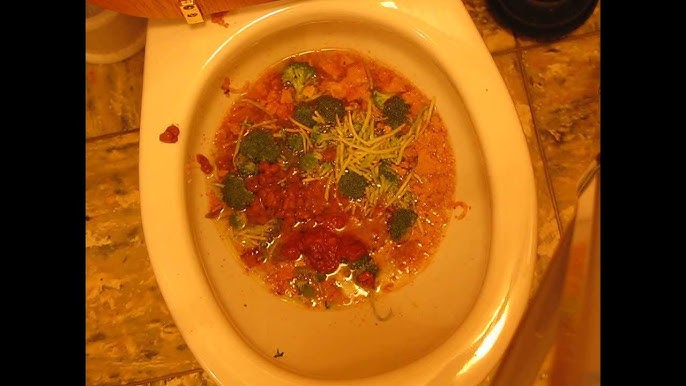Can You to Flush Food in the Toilet?
Can You to Flush Food in the Toilet?
Blog Article
We've stumbled on this article relating to Flushing Food Down the Toilet? listed below on the web and felt it made sense to write about it with you on this page.

Introduction
Many people are frequently confronted with the predicament of what to do with food waste, specifically when it concerns leftovers or scraps. One common concern that arises is whether it's fine to flush food down the bathroom. In this article, we'll look into the reasons why individuals may think about purging food, the effects of doing so, and alternative methods for correct disposal.
Reasons individuals might take into consideration flushing food
Absence of awareness
Some people might not understand the potential damage caused by flushing food down the commode. They may wrongly think that it's a harmless practice.
Ease
Flushing food down the bathroom may look like a fast and simple option to disposing of undesirable scraps, especially when there's no close-by garbage can available.
Negligence
In many cases, individuals might just pick to flush food out of sheer laziness, without thinking about the consequences of their activities.
Consequences of flushing food down the commode
Ecological influence
Food waste that winds up in waterways can contribute to contamination and injury water ecological communities. In addition, the water used to purge food can strain water sources.
Pipes problems
Purging food can cause clogged pipes and drains pipes, causing expensive plumbing repair services and aggravations.
Kinds of food that need to not be flushed
Fibrous foods
Foods with fibrous appearances such as celery or corn husks can get entangled in pipelines and create clogs.
Starchy foods
Starchy foods like pasta and rice can take in water and swell, resulting in blockages in pipelines.
Oils and fats
Greasy foods like bacon or cooking oils need to never ever be flushed down the toilet as they can solidify and cause blockages.
Proper disposal techniques for food waste
Utilizing a waste disposal unit
For homes furnished with garbage disposals, food scraps can be ground up and flushed through the plumbing system. Nevertheless, not all foods appropriate for disposal in this manner.
Recycling
Certain food packaging materials can be recycled, lowering waste and lessening ecological effect.
Composting
Composting is an environment-friendly means to throw away food waste. Organic materials can be composted and made use of to improve soil for horticulture.
The importance of correct waste monitoring
Lowering environmental injury
Proper waste administration methods, such as composting and recycling, help lessen pollution and protect natural deposits for future generations.
Shielding pipes systems
By preventing the technique of flushing food down the bathroom, house owners can prevent costly pipes fixings and maintain the integrity of their pipes systems.
Final thought
Finally, while it may be alluring to flush food down the bathroom for convenience, it's important to understand the prospective effects of this action. By adopting proper waste management methods and taking care of food waste responsibly, people can add to much healthier pipes systems and a cleaner setting for all.
FLUSH FOOD DOWN THE TOILET?
FLUSHING FOOD CAN CAUSE BLOCKED DRAINS IN YOUR HOME
All of the plumbing fixtures in your home are connected to the same sewer pipe outside of your home. This outdoor sewer pipe is responsible for transporting all the wastewater from your home to the Council sewer mains. Even small pieces of food that go down the kitchen sink can cause problems for your sewer. It should therefore be obvious that flushing larger bits of food, such as meat, risks a clog in either the toilet itself or the sewer pipes. Flushing greasy food is even more problematic because oil coagulates when it cools, coating the interior lining of your pipes.
THE TOILET IS NOT A BIN
Food isn’t the only thing that people shouldn’t be flushing down the toilet. People use the toilet to dispose of all kinds of things such as tampons, makeup wipes, dental floss, kitty litter and even underwear. Water goes to great lengths to educate residents about the high costs and stress placed on wastewater treatment systems simply from people flushing the wrong stuff down the toilet. It costs taxpayers millions of dollars each year, and homeowners thousands in blocked drain repairs.
FLUSHING FOOD IS A WASTE OF WATER
Flushing food is a waste of our most precious resource - water. In June this year Level 1 water restrictions were introduced to protect water supply from drought conditions. Much of New South Wales continues to be affected by prolonged drought with recent figures revealing up to 97 per cent of the state remains in drought. Depending on whether you have a single or dual flush toilet, every single flush uses between five and 11 litres of water. In the current climate this is a huge amount of water to be wasting on flushing food that should be placed in the bin (or better yet, the compost).
https://www.jabplumbingsolutions.com.au/blog/can-you-flush-food-down-the-toilet

We were made aware of that editorial on Think Twice Before Flushing Food Down Your Toilet from a buddy on another web address. Are you aware of another individual who is sincerely interested in the topic? Be sure promote it. I enjoy your readership.
Get Started Report this page